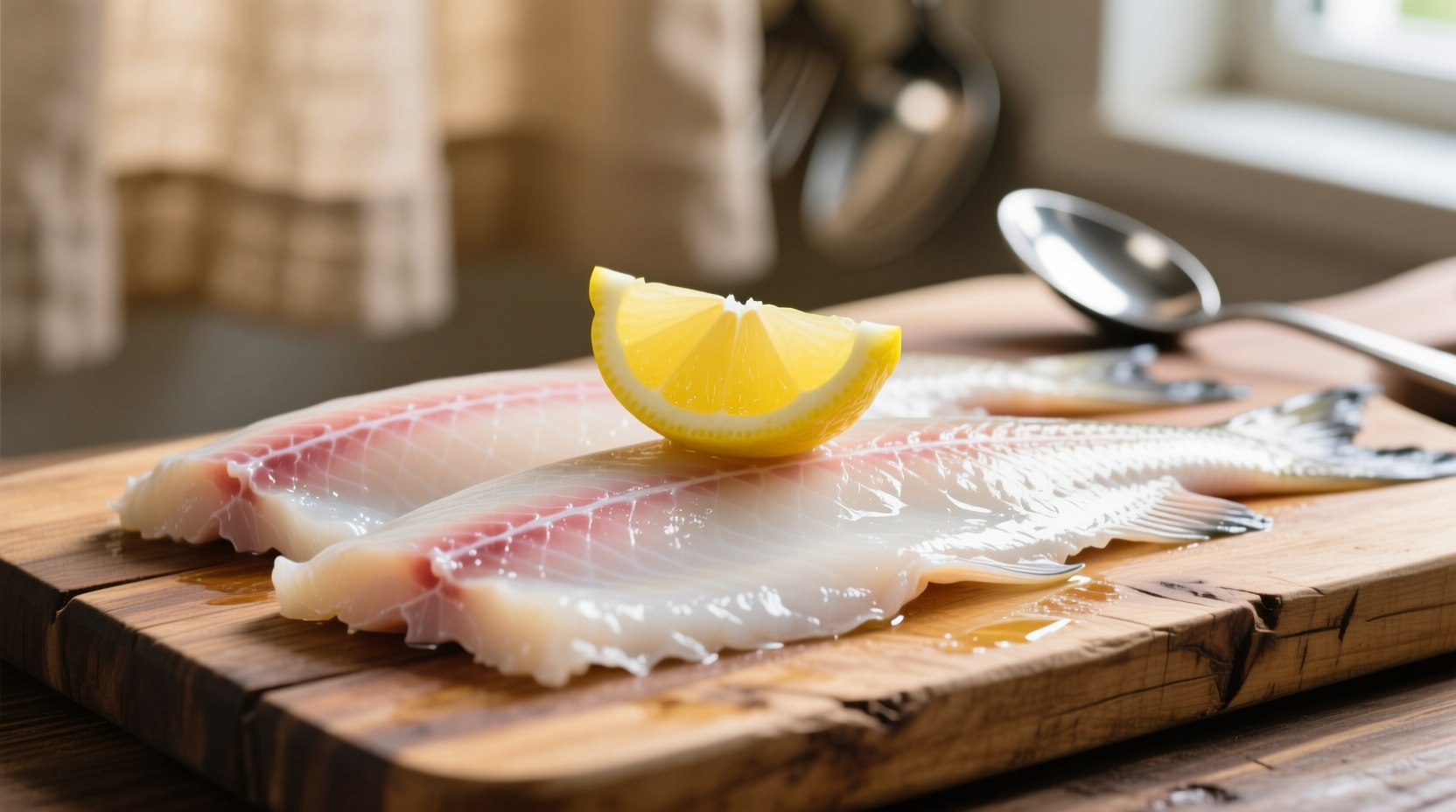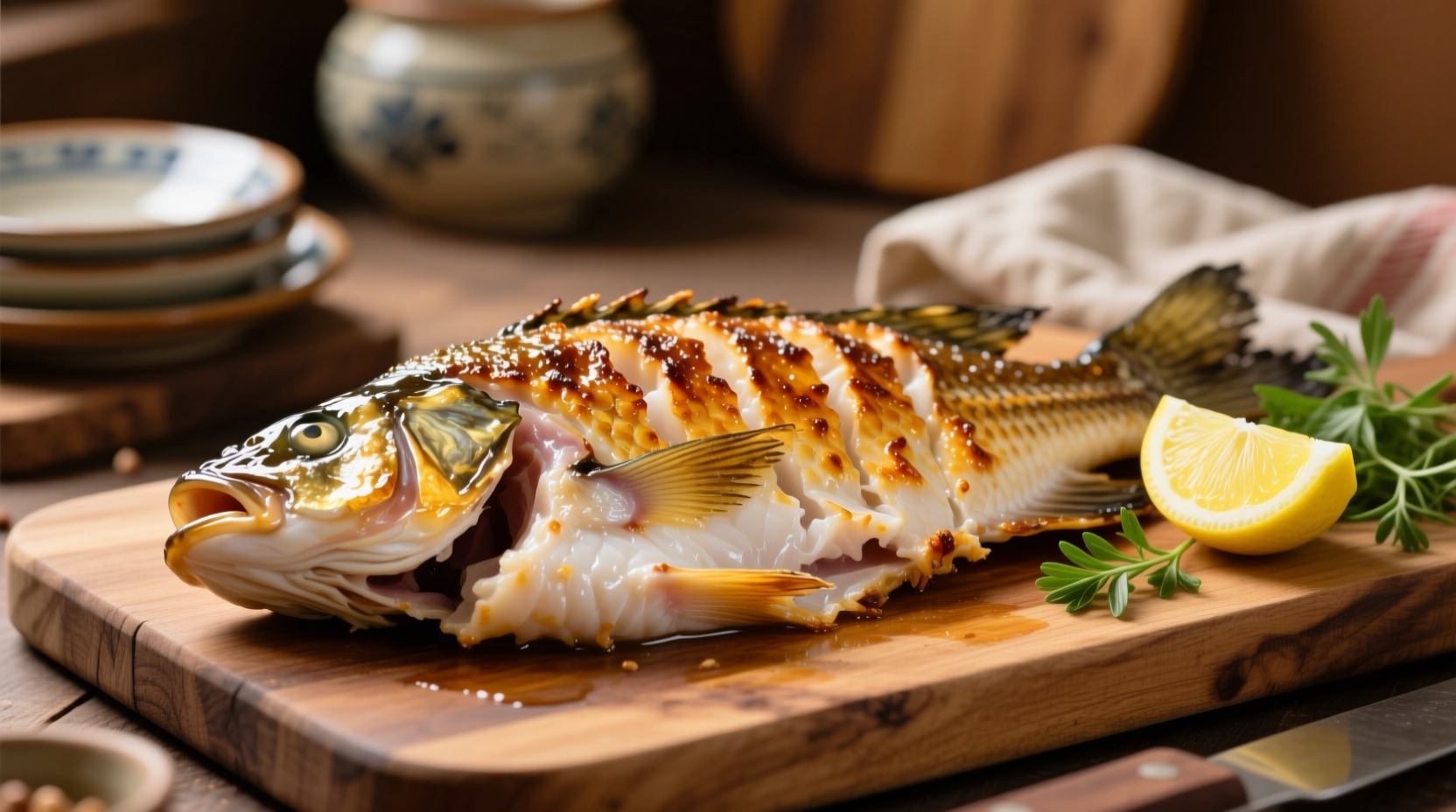Ever wondered whether catfish deserves its reputation as a "muddy" tasting fish? You're not alone. Many home cooks hesitate to try this affordable, sustainable seafood option based on misconceptions about its flavor. Understanding exactly what catfish tastes like—and how to prepare it properly—can transform your seafood experience and expand your culinary repertoire.
The True Flavor Profile of Catfish
Catfish stands out among freshwater fish for its remarkably mild flavor profile. Unlike stronger-tasting fish such as mackerel or bluefish, catfish contains lower levels of natural oils that contribute to "fishiness." Its flesh is firm yet tender with large, moist flakes that hold together well during cooking.
When properly handled from water to plate, catfish delivers a clean, slightly sweet taste that serves as an excellent canvas for various seasonings and cooking techniques. This neutral base flavor makes it particularly appealing to those who prefer milder seafood options or are just beginning to explore fish consumption.

Why Catfish Taste Varies: Key Influencing Factors
Several critical factors determine catfish flavor, explaining why taste experiences can differ significantly:
Water Quality and Environment
The water where catfish live directly impacts their flavor. Wild catfish from muddy-bottom rivers may absorb compounds like geosmin and 2-methylisoborneol (MIB), which can create earthy or muddy notes. According to research from the U.S. Geological Survey, these compounds originate from certain algae and bacteria in aquatic environments.
Farmed vs. Wild Catfish
Modern aquaculture has dramatically improved catfish consistency:
| Factor | Farmed Catfish | Wild Catfish |
|---|---|---|
| Flavor Consistency | Highly consistent mild flavor | Variable, often earthier taste |
| Texture | Firmer, more uniform | Can be softer or more variable |
| "Muddy" Flavor Risk | Very low with proper farming | Higher, especially in certain waters |
| Availability | Year-round, consistent supply | Seasonal, location-dependent |
The U.S. Food and Drug Administration notes that properly managed catfish farms maintain controlled water conditions that minimize exposure to flavor-affecting compounds, resulting in more predictable taste profiles.
Busting the "Muddy Catfish" Myth
The persistent belief that all catfish tastes muddy stems from experiences with poorly handled wild-caught specimens. Modern food science explains this phenomenon:
- Geosmin presence: This compound, produced by certain bacteria, creates earthy flavors
- Proper purging: Reputable farms use clean water systems to purge catfish before harvest
- Quick processing: Immediate icing after harvest prevents flavor degradation
A comprehensive study published in the Journal of Aquatic Food Product Technology confirmed that farmed catfish processed within strict timeframes show negligible geosmin levels—well below human detection thresholds.
Maximizing Catfish Flavor: Pro Chef Techniques
As a culinary professional who's worked with catfish across various cooking environments, I've found these preparation methods consistently deliver the best flavor:
Pre-Cooking Preparation
Soaking catfish in buttermilk or a saltwater solution (1/4 cup salt per quart of water) for 30-60 minutes before cooking helps neutralize any potential off-flavors and improves texture. This simple step, recommended by the USDA National Institute of Food and Agriculture, makes a remarkable difference in final flavor.
Ideal Cooking Methods
- Pan-searing: Creates a flavorful crust while keeping interior moist
- Blackening: Works exceptionally well with catfish's mild profile
- Baking: Preserves natural moisture without adding excess fat
- Frying: Traditional method that complements catfish's firm texture
Perfect Flavor Pairings
Catfish's mild nature makes it incredibly versatile. Consider these complementary flavors:
- Citrus (lemon, lime) enhances natural sweetness
- Smoky spices (paprika, cumin) add depth without overpowering
- Fresh herbs (dill, parsley) provide bright accents
- Mild sauces (remoulade, tartar) complement without dominating
How Catfish Compares to Popular Seafood Options
Understanding where catfish fits among other fish helps set proper flavor expectations:
| Fish Type | Flavor Intensity | Texture | Best For |
|---|---|---|---|
| Catfish | Mild | Firm, moist flakes | Beginners, versatile cooking |
| Cod | Mild | Flaky, delicate | Fish and chips, baking |
| Salmon | Strong | Rich, oily | Grilling, smoking |
| Tilapia | Very mild | Soft, delicate | Quick cooking, mild palates |
| Mahi Mahi | Moderate | Firm, steak-like | Grilling, broiling |
Catfish occupies a sweet spot between extremely mild fish like tilapia and more assertive options like salmon. Its firm texture holds up better than cod in frying applications while maintaining that approachable mild flavor.
When Catfish Shines: Ideal Culinary Applications
Catfish performs exceptionally well in specific cooking scenarios where other fish might falter:
- Frying applications: Its firm texture withstands high-heat cooking without falling apart
- Spice-forward dishes: Absorbs flavors beautifully without competing with seasonings
- Casseroles and baked dishes: Maintains structure through longer cooking times
- Smoked preparations: Takes smoke flavor exceptionally well
For those exploring sustainable seafood options, catfish represents an excellent choice. The Monterey Bay Aquarium Seafood Watch program rates responsibly farmed U.S. catfish as a "Best Choice" due to effective environmental management practices in modern aquaculture operations.
Perfecting Your Catfish Experience: Practical Tips
Follow these actionable recommendations for consistently delicious catfish:
- Source wisely: Look for MSC-certified or locally farmed catfish when possible
- Check freshness: Fresh catfish should have a clean, ocean-like smell (never ammonia-like)
- Prep properly: Always rinse and pat dry before seasoning
- Cook to temperature: 145°F internal temperature ensures perfect doneness
- Rest before serving: Let cooked fish rest 3-5 minutes for optimal texture
Remember that cooking time varies significantly based on thickness. A general rule is 10 minutes per inch of thickness, measured at the thickest point. Overcooking remains the most common mistake that leads to dry, less flavorful catfish.











 浙公网安备
33010002000092号
浙公网安备
33010002000092号 浙B2-20120091-4
浙B2-20120091-4